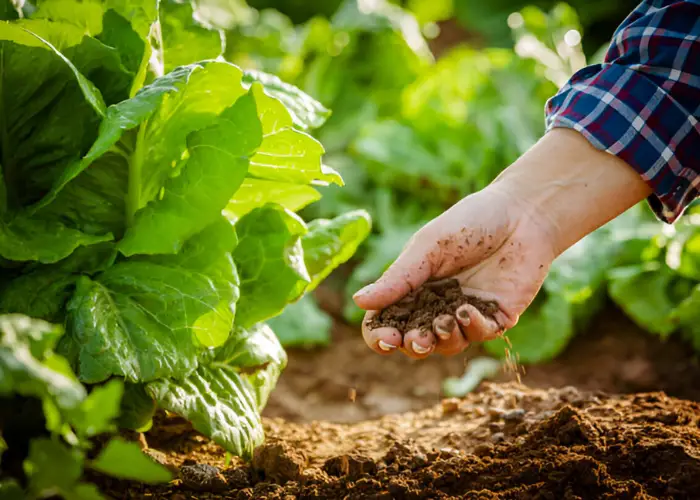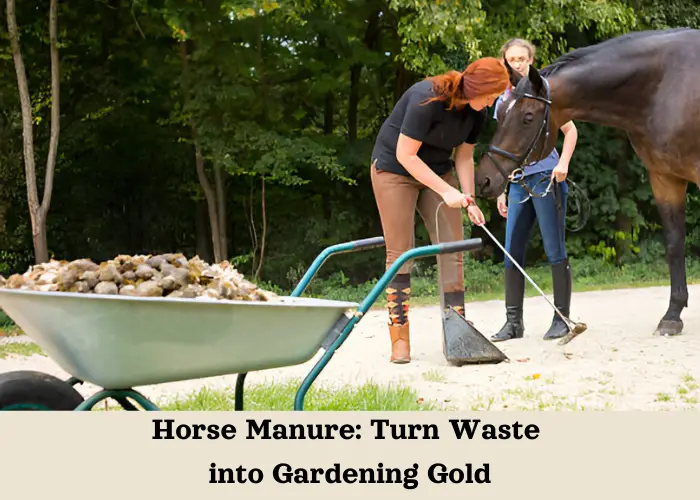Horse Manure
Do you know that using the horse droppings in your garden will significantly improve the growth of your plants and it will also strengthen the soil at the same time. Horse manure is a natural fertilizer that is high in nitrogen and contains a sizable amount of phosphorus and potassium which are also essential for growth. To get the benefits of horse manure in your garden, first you have to learn the correct way to use them. In this guide, we will cover the benefits and preparation of horse manure as well as how to apply it in the garden.
What is Horse Manure?
Horse manure is the feces or droppings of the horses, which is usually mixed with the straw, hay, or sawdust. It’s a organic material that, when composted or added to the garden, it can help to build soil fertility and improve the plant health.
This Manure is the most basic source of all the 3 necessary nutrients—nitrogen, phosphorus, and potassium- and therefore it is a natural plant food for the garden with the help of which plants grow well.
Composition of Horse Manure:
Nitrogen (N): Helps the plants to grow healthy and strong by promoting lush green foliage.
Phosphorus (P): Encourages the strong root development and improves the flower and fruit production.
Potassium (K): Supports the overall plant health and helps the plants to resist disease.
The quality of horse manure can vary depending on the horse’s diet and the bedding used. Manure from horses fed on organic hay or grass is particularly beneficial for the garden.
Benefits of Using Horse Manure
Using this manure in your garden is very helpful. It has many benefits, such as:
- Improving Soil Structure: This manure adds organic material to the soil, making it airy and well-drained. This works well for heavy clay soils.
- Providing Nutrients: It gives plants important nutrients, helping them grow healthy and strong.
- Boosting Microbial Activity: It helps good soil microorganisms grow, which break down organic matter and make the soil richer.
- Retaining Water: The organic material in horse manure holds moisture in the soil, so you don’t need to water as often.
Preparing Horse Manure for Garden Use
Using raw horse manure directly on the garden patch is not a good idea due to its overwhelming potency. Placing fresh manure on plants without prior treatment can scorch them due to its excess nitrogen content and also raise the acidity of the soil. With proper manure treatment, these problems can easily be avoided.
Fresh Manure:
Before applying manure to your garden, make sure you let it sit for composting for no less than 6 months. That way, you will ensure that it is ready to be used.
Composting Horse Manure:
The composting process of horse manure will eliminate pathogens and weed seeds while also using up nitrogen. The manure should be combined with carbon sources, such as straw or dried leaves. It is best to use a 2:1 ratio of nitrogen to carbon for best results in composting.
Also read: Starting a Garden: A Beginner’s Step-by-Step Blueprint
10 DIY Cattle Panel Trellis Ideas You Need to Try
How to Compost Horse Manure
Composting horse manure turns it into a safe and useful fertilizer for your garden. Composting breaks down the manure, kills harmful germs and weed seeds, and makes it safe to use.
Steps to Compost:
- Set Up a Compost Bin or Pile: Build a compost pile or use a bin. Make sure the pile is at least 3 feet high to keep the heat in.
- Add Manure and Bedding: Mix horse manure with straw or hay. This balances the nutrients for better composting.
- Turn the Pile Often: Turn the pile regularly to let air in and speed up decomposition.
- Check Temperature and Moisture: Keep the pile moist but not too wet. The temperature should stay between 130°F and 160°F.
- Let It Decompose for 6-12 Months: Be patient! It takes several months for the manure to turn into rich compost.
How to Apply Horse Manure to Your Garden

Applying this manure to your garden is a fantastic way to improve soil quality and provide essential nutrients to your plants. However, it’s important to know the right way to apply it to get the best results. Here’s a step-by-step guide on how to do it:
1. Use Manure that is Well Composted
Fresh horse manure can be too potent for plants and in some cases burn them. Therefore, composted manure will always work better than fresh manure. By composting, the dangerous ammonia and pathogens are broken down, and it is safe to use around your home. If the composted manure is ready, it should smell pleasant, be dark, and crumbly in texture.
2. Prepare Your Garden Bed
Clear the area: You also need to pull out weeds or dead plants that would interfere with using the composted horse manure in the garden bed.
Loosen the soil: You should make use of a garden fork or a hoe to ensure that soil in the selected area of where you want to use the manure is loose. This will allow for smoother mixing and helps the overall quality of the soil.
3. Apply the Manure
Apply the manure all over the top surface of your garden bed. A layer 2-3 inches thick is best.
Work it into the Soil: While mixing the manure, use a rake, garden fork, or tiller to combine it with the soil. This will ensure that the nutrients are absorbed into the root zone of your plants.
4. Use Manure as Mulch
If you want to let it be and not mix it into the soil, then you can as well use manure as a mulch for plants. Put a thin layer (1-2 inches) around the plants’ bases and keep it away from the stems to keep the plant from rotting. The manure will slowly release its nutrients and water will be stored in the soil due to that.
5. Timing and Frequency
When to use: Fall or early spring are the main periods during which manure can be applied to mornings and evenings. It is the best time to strengthen the soil for planting season.
How much to use: You can apply manure once or twice a year, depending on the needs of your garden. Over time, it will improve soil fertility and structure.
6. Avoid Over-Application
While horse manure is good, a high amount of it will cause nutrient imbalances resulting in the death of your plants. Strictly adhere to the 2-3 inch recommended dose for a more sustainable approach.
7. Water Well After Application
After applying manure, water your garden thoroughly. This solution is helpful in ensuring the manure rot process is speeded up and its nutrients well incorporated into the soil.
8. Wait Before Harvesting
In case of edible crops, the time between the application of the manure and the harvest should be at least 3-4 months. This means any pathogens are decomposed and the possibility of contamination is decreased.
Best Plants to Use Horse Manure With
This manure can be useful for a variety of plants, including vegetables, flowers, and trees. However, it works best with the plants that need a lot of nutrients, such as:
Vegetables: Corn, tomatoes, lettuce, and cabbage.
Flowers: Roses, dahlias, sunflowers, and marigolds.
Fruit Trees: Apples, peaches, and pears.
Avoiding Common Mistakes with Horse Manure
While this manure is a valuable resource, improper use can harm plants and soil. Common mistakes include:
Over-application: Applying too much manure can lead to nutrient burn.
Using Fresh Manure: Fresh manure may contain harmful pathogens and excess nitrogen.
Safety Considerations
Horse manure can contain harmful bacteria, such as E. coli and Salmonella, so it’s important to handle it safely. Always wear gloves when working with manure, and wash your hands thoroughly afterward. If you’re using fresh manure, compost it for several months before applying it to your garden to kill off pathogens.
Frequently Asked Questions (FAQ)
1. Is fresh horse manure good for plants?
Fresh horse manure can burn the plants because it is too high in nitrogen. Always compost it first.
2. How long should I compost horse manure?
Manure should be composted for at least 6 months before using it in your garden.
3. Can horse manure be used for all types of plants?
Yes, but it works best for heavy-feeding plants like vegetables & fruit trees.
4. Can horse manure kill weeds?
Properly composted manure can help suppress weeds, but fresh manure may contain weed seeds.
5. How often should I apply horse manure to my garden?
Apply manure in the fall or early spring, and reapply every year as needed.
6. Is horse manure safe to use around pets and children?
Yes, but it is best to compost it properly to reduce the risk of the pathogens.

